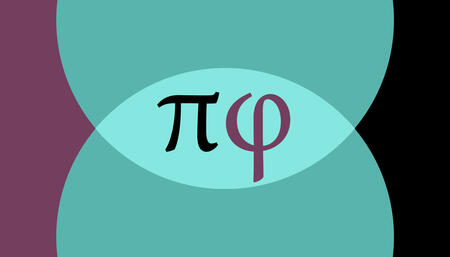What are paraphilias?
This is an educational Carrd about paraphilias, meant to counter myths and give the reader up-to-date information.
The definition of a paraphilia
A paraphilia is a non-normative attraction. There is no clear line between an attraction that is paraphiliac and an attraction that is not, since the concept of the norm varies in different groups and cultures. The current definition used by English-speaking mental health professionals states that a paraphilia is an "intense and persistent sexual interest other than sexual interest in genital stimulation or preparatory fondling with phenotypically normal, physically mature, consenting human partners" (source: DSM-5). This definition is lacking flexibility and nuance, since some paraphiliacs are asexual.If we reword it to include other types of attraction, we will get that a paraphilia is an attraction towards actions other than the ones implied by intimacy with a partner or an attraction towards something or someone that is not an adult consenting human. This is the definition that the paraphiliac community uses.This will give us the simplest classification of paraphilias: attractions to unusual actions (also called kinks), attractions to unusual objects (also called fetishes), and attractions to unusual beings.
Paraphilia vs paraphiliac disorder
Contrary to the popular belief, paraphilias are not inherently disordered."Paraphilia" first emerged as nonjudgemental alternative to terms like "psychopathia sexualis". It was coined by Dr. Friedrich S. Krauss in 1903 in an article, full of criticism of psychiatry and medicalization.I have the same objection to the expression “sexual perversion” as to “psychopathia sexualis”. Here, too, the word conceals a condemnation from the outset, which should not be put in front of scientific discussions at least, so as not to influence the conclusion. As a replacement for both terms I would like to suggest another, again a Greek one, paraphilia (παράφιλία), for which I know of no evidence from the old Greek usage, but which is formed similar to the word παράνοια (ignorance, foolishness, madness) and simply indicates a form deviating from ordinary love and not corresponding to the nature of correct love, the purpose of which must be the fertilization of the woman. The epithet would then be paraphiletic (παραφιλητος). In the following I want to make use of this new term, which has the additional advantage of saving us a word each time. <...> Individual minor symptoms or even mere "nervousness", which is so widespread today in all classes of the population, are certainly not enough to describe paraphiletic acts or conditions as "morbid". Rather, there is no doubt that all paraphilias can also occur in mentally and physically healthy people who must be considered to be of "sound mind" in every respect. (source: Psychopathia sexualis. A report by Dr. Friedrich S. Krauss.)Later this word was picked up and misused by the medical field. Some fairness was restored recently, when the 5th edition of the DSM came out and separated paraphilias from paraphiliac disorders.A paraphilic disorder is a paraphilia that is currently causing distress or impairment to the individual or a paraphilia whose satisfaction has entailed personal harm, or risk of harm, to others. A paraphilia is a necessary but not a sufficient condition for having a paraphilic disorder, and a paraphilia by itself does not necessarily justify or require clinical intervention. In the diagnostic criteria set for each of the listed paraphilic disorders. Criterion A specifies the qualitative nature of the paraphilia (e.g., an erotic focus on children or on exposing the genitals to strangers), and Criterion B specifies the negative consequences of the paraphilia (i.e., distress, impairment, or harm to others). In keeping with the distinction between paraphilias and paraphilic disorders, the term diagnosis should be reserved for individuals who meet both Criteria A and B (i.e., individuals who have a paraphilic disorder). If an individual meets Criterion A but not Criterion B for a particular paraphilia—a circumstance that might arise when a benign paraphilia is discovered during the clinical investigation of some other condition— then the individual may be said to have that paraphilia but not a paraphilic disorder (source: DSM-5).At the core of the distinction lies the difference between an abnormal feeling and a feeling that hurts you or leads you to hurting others. Being abnormal by itself should not mean that you must be “cured” of your abnormality. Moreover, there is no data that would suggest it is possible to medically alter who or what a person is attracted to, while managing your behavior and your attitude to your attraction is achievable.If you want to read more about the changes in how the English-speaking medical community views paraphilias, read this article from the Journal of the American Academy of Psychiatry and the Law.
Important to note:
Some people call paraphiliacs without a paraphiliac disorder "nondisordered" or "healthy" paraphiliacs. This is not appropriate, as it erases neurodivergent paraphiliacs, especially paraphiliacs with trauma from abuse and oppression. This is one of the cases where person first language - a paraphiliac with/without a paraphiliac disorder - is more suitable.
Some examples of paraphilias
The most common paraphilias are voyeurism and exhibitionism, sadism and masochism, as well as objectophilia. Objectophilia is an umbrella term that includes many other paraphilias, such as attractions to latex or rubber, boots or gloves. Other paraphilias worth noting are hematolagnia (attraction to blood), biastophilia (attraction to nonconsensual sexual situations), fictophilia (attraction to fictional characters). You can find more examples of uncommon and niche paraphilias in this list.
How many people are paraphiliac?
Much more than you'd assume.Prevalence rates for paraphilias are difficult to obtain due to changes in criterion over time and between cultures [10]. Ahlers et al. [31] surveyed a sample of 1,915 German men aged 40-79 and found 62.4% reported at least one paraphilia-associated sexual arousal pattern, and that this caused distress in only 1.7% of cases (source: Mcmanus, Michelle & Hargreaves, Paul & Rainbow, Lee & Alison, Laurence. (2013). Paraphilias: Definition, diagnosis and treatment. F1000prime reports. 5. 36. 10.12703/P5-36.)Nearly half of this sample expressed interest in at least one paraphilic category, and approximately one-third had had experience with such a practice at least once. Voyeurism, fetishism, frotteurism, and masochism interested both male and female respondents at levels above what is usually considered to be statistically unusual (15.9%) (source: Joyal CC, Carpentier J. The Prevalence of Paraphilic Interests and Behaviors in the General Population: A Provincial Survey. J Sex Res. 2017 Feb;54(2):161-171. doi: 10.1080/00224499.2016.1139034. Epub 2016 Mar 3. PMID: 26941021.)In the present survey, 50.6% of the men and 41.5% of the women reported at least 1 behavior considered paraphilic (source: Castellini G, Rellini AH, Appignanesi C, Pinucci I, Fattorini M, Grano E, Fisher AD, Cassioli E, Lelli L, Maggi M, Ricca V. Deviance or Normalcy? The Relationship Among Paraphilic Thoughts and Behaviors, Hypersexuality, and Psychopathology in a Sample of University Students. J Sex Med. 2018 Sep;15(9):1322-1335. doi: 10.1016/j.jsxm.2018.07.015. PMID: 30224020.)We collected data about sexual motivations and behavior from a representative online sample of 10,044 Czechs (5,023 men and 5,021 women). <…> Our results show that 31.3% of men (n = 1,571) and 13.6% of women (n = 683) admitted to at least one paraphilic preference. Moreover, 15.5% of men and 5% of women reported more than one paraphilic preference. (source: Klára Bártová, Renáta Androvičová, Lucie Krejčová, Petr Weiss & Kateřina Klapilová (2021) The Prevalence of Paraphilic Interests in the Czech Population: Preference, Arousal, the Use of Pornography, Fantasy, and Behavior, The Journal of Sex Research, 58:1, 86-96, DOI: 10.1080/00224499.2019.1707468.)These figures might as well be an understatement, since paraphilias are a stigmatized topic. But it's safe to say a significant part of human population is paraphiliac.
Things that harm paraphiliacs
Paraphilias are often stereotyped as uncontrollable urges, and paraphiliacs are seen as sex-driven potential rapists in need of medical intervention. This creates a stigma around the discussions of paraphilia, making it hard to research your own attractions and exchange information with people. Alternatively, if we use the word "kink", the assumption is that kinks are sexual hobbies people engage in part-time and can quit. This makes people who want to conduct deeper analysis of their attractions seem like they center their identity around sex, and their attempts to explain their interests are not exclusively sexual are laughed at.Both views add to the general sexualization of paraphilias and paraphiliac spaces. People take disclosing a paraphilia for consent to sexually explicit questions, paraphiliac discussions are assumed to be about sex and meet ups. This leads to alienation of underage paraphiliacs and child abuse accusations against adults who attempt to educate them.Despite paraphilias being quite common, the paraphiliac community is torn apart and disconnected due to stigma. Abuse towards paraphiliacs, offline and online, is extremely prevalent. The existing research of paraphilias is also disproportionately focused on sexual behaviors and barely addresses wellbeing of the people.Even though paraphilias themselves are not disorders, ableism harms paraphiliacs. It takes two common forms:1) Only prioritizing paraphiliacs without paraphiliac disorders, demonizing PDs and posing them as a cause of sexual abuse, pushing paraphiliacs with PDs out of safe spaces and activism. This silences the most vulnerable parts of the paraphiliac community and prevents them from voicing their needs and getting support.2) Treating paraphiliacs with PDs as better or more virtuous - often due to a wrong belief that seeing your paraphilia as a disorder is essential for having anti abuse ethics. This makes recovering from a disorder harder.
Flags
There are two flags meant to be used by paraphiliacs to show their identity and unity:


These flags are not meant to be LGBTQ+ flags, since not only LGBTQ+ identities can have flags.More flags for various kinds of paraphilias can be found on the Para Flags Wiki.
Short facts
Nikola Tesla had a strong romantic preference for pigeons and referred to one as his wife.
Homosexuality was included in the DSM as a paraphilia from 1952 to 1973.
Some believe that the difference between a kink and a fetish is that a kink is any non-normative sex interest, and a fetish is an exclusive interest you cannot enjoy sex without, but most paraphiliacs are nonexclusive or have several paraphilias.
Not only humans can have paraphilias – some animals have been reported to be attracted to humans, to other animals, or to inanimate objects.
There are groups and movements focused on rights of particular paraphiliacs, such as the Objectum Sexuality movement, existing since early 1970s. Paraphiliac activism is not new, although it's likely that we did not unite under this label as activists till early 2018.
Most paraphilias are named after the object of attraction, but several are given names of famous paraphiliacs, such as sadism, masochism, and retifism (shoe fetishism) named after Donatien Alphonse François de Sade, Leopold Ritter von Sacher-Masoch, and Nicolas Restif de la Bretonne accordingly.
August was chosen as a paraphilia pride month in 2023.
Important to remember
Human sexuality is a spectrum. From exclusive interest in adult fertile humans of the opposite sex to exclusive interest in active volcanoes, there exists a myriad of different types of attraction. We classify them as normal or non-normative intuitively, based on the values we were taught. There is no difference in worth between an attraction we consider normal and a paraphiliac attraction, the only thing that matters is the life choices we make.